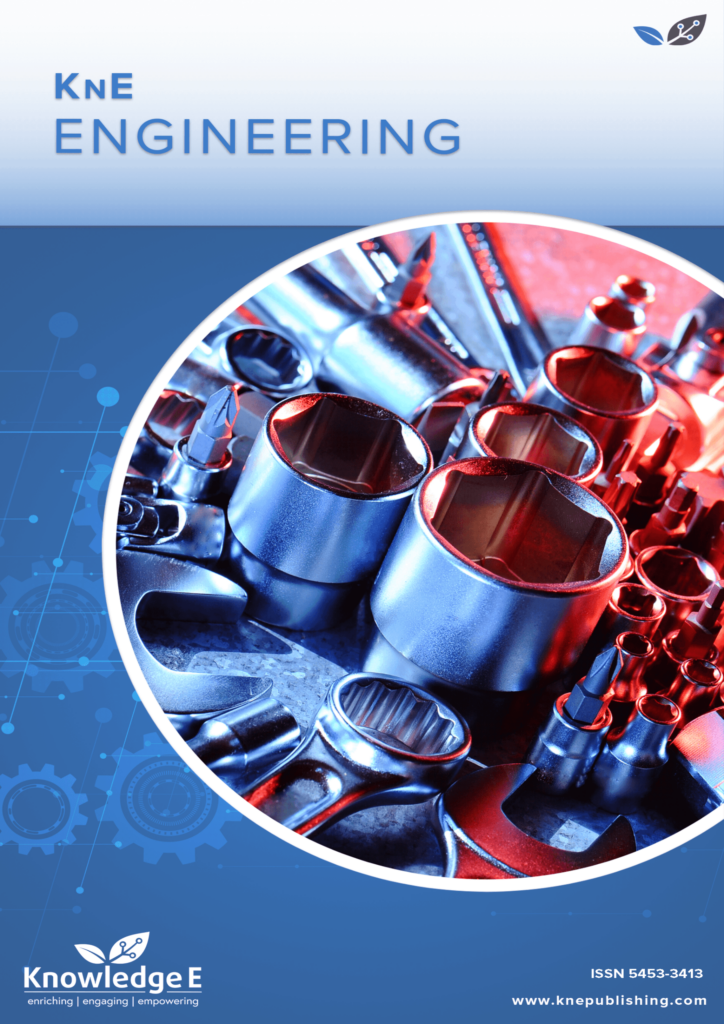
KnE Engineering
ISSN: 2518-6841
The latest conference proceedings on all fields of engineering.
Aircraft Propellers, an Outdated Innovation?
Published date: Jun 02 2020
Journal Title: KnE Engineering
Issue title: International Congress on Engineering — Engineering for Evolution
Pages: 769–780
Authors:
Abstract:
The race for speed ruled the early Jet Age on aviation. Aircraft manufacturers chased faster and faster planes in a fight for pride and capability. In the early 1970s, dreamed that the future would be supersonic, but fuel economy and not acceptable noise levels made that era never came. After the 1973 first oil crisis, the paradigm changed. The average cruise speed on newly developed aircraft started to decrease in exchange for improvements in many other performance parameters. At the same pace, the airliner’s powerplants are evolving to look more like a ducted turboprop, and less like a pure jet engine as the pursuit for the higher bypass ratios continues. However, since the birth of jet aircraft, the propeller-driven plane lost its dominant place in the market. Associated with the idea of going back to propeller-driven airplanes, and what it represented in terms of modernity and security, it started a propeller avoidance phenomenon on the travelers and thus on the airlines. Today, even with the modest research effort since the 1980s, the advanced propellers are getting closer efficiencies to the jet-powered engines at their contemporary typical cruise speeds. This paper gives a brief overview of the performance trends in aviation since the last century. Comparison examples between aircraft designed on different paradigms are presented. The use of propellers as a reborn propulsive device is discussed.
Keywords: Propeller, Aircraft, Turboprop, Flight efficiency, Flight speed
References:
[1] G. Rosen, Thrusting Forward: A History of the Propeller, First. Hamilton Standard, 1984.
[2] B. Laufer, “The Prehistory of Aviation,” in The Open Court, 1931.
[3] J. R. Kinney, Reinventing the Propeller, First. Cambridge: Cambridge University Press, 2017.
[4] WIPO, “World Intellectual Property Report: Breakthrough Innovation and Economic Growth,” Geneva, 2015.
[5] D. W. Douglas, “The Development and Reliability of the Modern Multi-Engine Air Liner,” J. R. Aeronaut. Soc., vol. 40, pp. 1042–1043, 1046, 1935.
[6] S. H. Verhovek, Jet Age: The Comet, the 707, and the Race to Shrink the World, First. New York, NY, USA: Avery, 2010.
[7] “Boeing 727-200 Technical Specs.” [Online]. Available: https://www.airliners.net/aircraft-data/boeing- 727-200/90. [Accessed: 28-Sep-2019].
[8] S. Farokhi, Aircraft Propulsion, 2nd ed. Kansas: WILEY, 2014.
[9] NASA, NASA’s Contributions to Aeronautics, vol. 2. Washington: National Aeronautics and Space Administration, 2010.
[10] B. Marinus, “Multidisciplinary Optimization of Aircraft Propeller Blades,” VON KARMAN INSTITUTE | CENTRALE LYON - UNIVERSITY LYON I, 2011.
[11] J. Proctor, Convair 880 & 990 (Great Airliners Series, Vol. 1), First. Paperback, 1996.
[12] D. Leone, “Supersonic DC-8, i.e. the Concorde wasn’t the first Airliner to Break the Sound Barrier,” 2019. [Online]. Available: https://theaviationgeekclub.com/supersonic-dc-8-i-e-the-concorde-wasnt-the- first- airliner-to-break-the-sound-barrier/. [Accessed: 20-Sep-2019].
[13] Nick Greene, “The First Commercial Jet To Go Supersonic Was Not the Concorde,” 2014. [Online]. Available: http://mentalfloss.com/article/58517/first-commercial-jetbreak-sound-barrier-was- not-concorde. [Accessed: 20-Sep-2019].
[14] “Tu-144 Technical Specs.” [Online]. Available: http://www.tu144sst.com/techspecs/dimensions.html. [Accessed: 20-Sep-2019].
[15] “Concorde Technical Specs.” [Online]. Available: http://www.concordesst.com/performance.html. [Accessed: 20-Sep-2019].
[16] “Boeing 2707.” [Online]. Available:
[17] . [Accessed: 20-Sep-2019].
[18] J. W. Mckee, “Flight Control System for The Boeing 2707 Supersonic Transport Airplane,” SAE Tech. Pap. 670528, p. 10, 1967.
[19] F. E. McLean, Supersonic Cuise Technology. Washington, DC: NASA, Scientific and Technical Information Branch, 1985.
[20] A. D. Rutherford, D. Ph, B. Graver, D. Ph, and C. Chen, “Noise and climate impacts of an unconstrained commercial supersonic network,” Int. Counc. CLean Transp., no. January, 2019.
[21] “Boeing 737 Max Website.” [Online]. Available: https://www.boeing.com/commercial/737max/.
[22] “Concorde fuel performance: better than it seems?,” FLIGHT International, p. 8, May- 1976.
[23] Rolls-Royce, The JET ENGINE, Fifth. Derby: Rolls-Royce, 1986.
[24] J. Ostrower, “Boeing has narrowed the fan size on the CFM International Leap-1B engines which will power its newly-launched 737 Max family to two options - 168cm or 173cm (66in or 68in),” 2011. [Online]. Available: https://www.flightglobal.com/news/articles/boeing-narrows-737-max-engine- fan- size-options-to-two-361438/. [Accessed: 20-Sep-2019].
[25] EUROCONTROL and FAA, “2017 | Comparison of Air Traffic Management-Related Operational Performance: U.S./Europe,” 2019.
[26] C. Issawi, “The 1973 Oil Crisis and After,” J. Post Keynes. Econ., no. 1:2, 3–26, 1978.
[27] MARK D. BOWLES, THE “APOLLO” OF AERONAUTICS, NASA’s Aircraft Energy Efficiency Program 1973–1987. Washington, DC: NASA, 2010.
[28] R. D. Hager and D. Vrabel, “Advanced Turboprop Project,” Cleveland, 1988.
[29] EIA, “U.S. Energy Information Administration.” [Online]. Available: https://www.eia.gov.
[30] United States Department of Labor, “Bureau of Labor Statistics.” [Online]. Available: https://www.bls. gov/cpi/.
[31] R. C. Hendricks, D. L. Daggett, P. Anast, and N. Lowery, “Future Fuel Scenarios and Their Potential Impact to Aviation,” 11th Int. Symp. Transp. Phenom. Dyn. Rotating Mach., 2011.
[32] A. von Schoenberg, “Turboprop Aircraft Insight 2015,” 2015.
[33] ACARE, “Strategic Research Agenda,” vol. 1, no. October, 2002.
[34] K. P. Valavanis, Advances in Unmanned Aerial Vehicles - State of the Art and the Road to Autonomy.Tampa, Florida, USA: Springer, 2007.
[35] A. Dumas, M. Trancossi, M. Madonia, and I. Giuliani, “Multibody Advanced Airship for Transport,” inSAE Technical Paper 2011-01-2786, 2011.
[36] P. Martin and B. Paden, “A different look at output tracking: control of a VTOL aircraft * Searching for a flat output,” Control, no. December, pp. 2376–2381, 1994.
[37] B. Erginer and E. Altug, “Modeling and PD Control of a Quadrotor VTOL Vehicle,” pp. 894–899, 2007. [38] R. Olfati-Saber, “Global configuration stabilization for the VTOL aircraft with strong input coupling,” IEEETrans. Automat. Contr., vol. 47, no. 11, pp. 1949–1951, 2002.
[39] B. Herisse, F. X. Russotto, T. Hamel, and R. Mahony, “Hovering flight and vertical landing control of a VTOL Unmanned Aerial Vehicle using optical flow,” 2008 IEEE/RSJ Int. Conf. Intell. Robot. Syst. IROS, pp. 801–806, 2008.